Out now in Consciousness and Cognition:
Racial bias in face perception is sensitive to instructions but not introspection
(with Merle Fairhurst and @OpheliaDeroy)
Paper: https://www.sciencedirect.com/science/article/pii/S1053810019303423
PDF:">https://www.sciencedirect.com/science/a... http://eointravers.com/publication/travers-2020-racial/travers-2020-racial.pdf
Data">https://eointravers.com/publicati... & Code: https://osf.io/brssn/
Thread:">https://osf.io/brssn/&qu... https://abs.twimg.com/emoji/v2/... draggable="false" alt="👇" title="Rückhand Zeigefinger nach unten" aria-label="Emoji: Rückhand Zeigefinger nach unten">
https://abs.twimg.com/emoji/v2/... draggable="false" alt="👇" title="Rückhand Zeigefinger nach unten" aria-label="Emoji: Rückhand Zeigefinger nach unten">
Racial bias in face perception is sensitive to instructions but not introspection
(with Merle Fairhurst and @OpheliaDeroy)
Paper: https://www.sciencedirect.com/science/article/pii/S1053810019303423
PDF:">https://www.sciencedirect.com/science/a... http://eointravers.com/publication/travers-2020-racial/travers-2020-racial.pdf
Data">https://eointravers.com/publicati... & Code: https://osf.io/brssn/
Thread:">https://osf.io/brssn/&qu...
At @IP_SAS, we were interested how people experience perceptual biases. Sometimes, we see the world differently to how it really is, but how do these distortions occur, and are we aware of them? To explore this, we focused on one bias in particular...
The race-lightness effect is what makes faces with typically African features seem to be darker in complexion than they really are, and faces with typically European features lighter. At this point, let& #39;s pause for an aside about race and cognitive science.
First, #BlackLivesMatter  https://abs.twimg.com/hashflags... draggable="false" alt="">, and everyone involved in this research is a committed anti-racist. However, this study isn& #39;t about racism per se, it& #39;s about a visual bias involving things - facial features and skin tone - that we associate with race.
https://abs.twimg.com/hashflags... draggable="false" alt="">, and everyone involved in this research is a committed anti-racist. However, this study isn& #39;t about racism per se, it& #39;s about a visual bias involving things - facial features and skin tone - that we associate with race.
It& #39;s not the same as implicit racial biases like Implicit Associations between Black faces and negative words, or Weapon Bias, where items held by a person of colour are more likely to be misperceived as weapons in split-second judgements.
Understanding an alleviating these biases is an important but difficult goal, and many people are working towards it. However, that& #39;s not what this paper, based on experiments run a few years ago, is about.
Now, back to the experiments.
Now, back to the experiments.
First, how quickly does this bias emerge? We used mouse tracking to see when differences in actual lightness and facial features began to affect motor output as participants judged which of two faces was lighter. We found that both cues kick in at around the same time, ~ 0.5 s
Next, are people aware of their bias? We used a novel 2D SDT approach (more on this later) to predict on each trial a) how confident someone should be in their decision if they weight cues in the same way for decision and confidence ratings, and b) how confident they should be...
...if giving less weight to facial features during the confidence rating. We found that confidence ratings (and RTs) matched what we would under a), indicating no latent awareness of the bias.
In a second experiment, we told some participants halfway through the experiment about their biases, and asked them to try to avoid them. Lo, this reduced the weight they gave to facial features when judging lightness (revealed by some fancy Bayesian modelling).

 Read on Twitter
Read on Twitter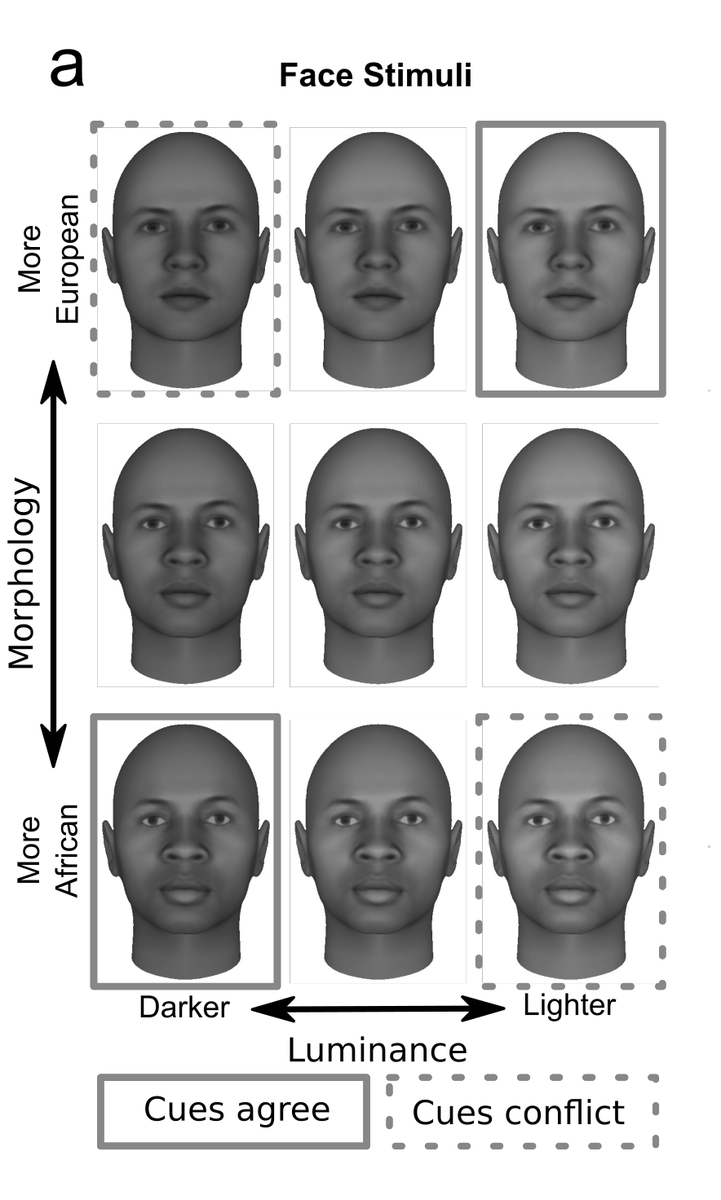
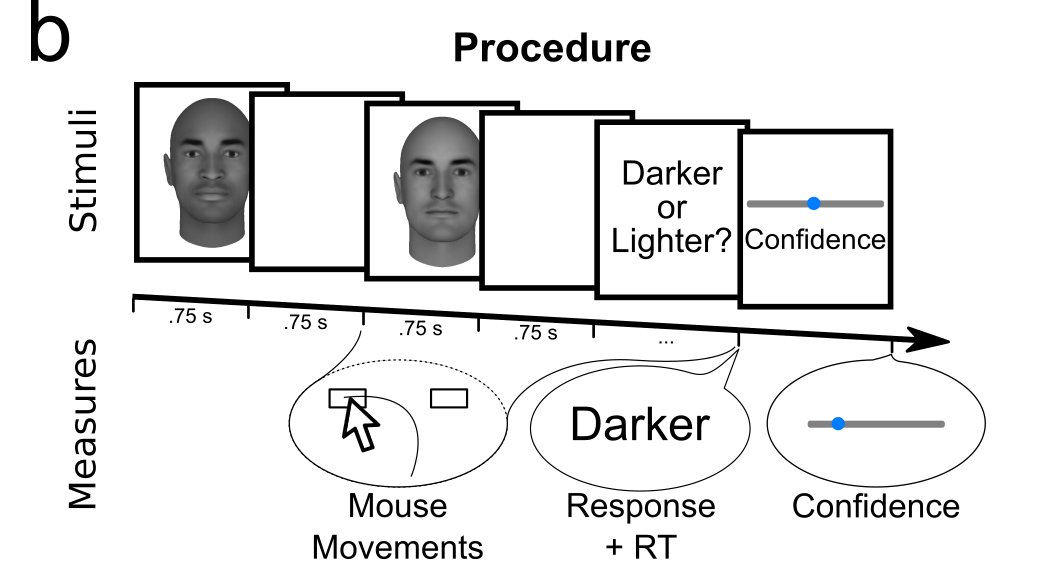
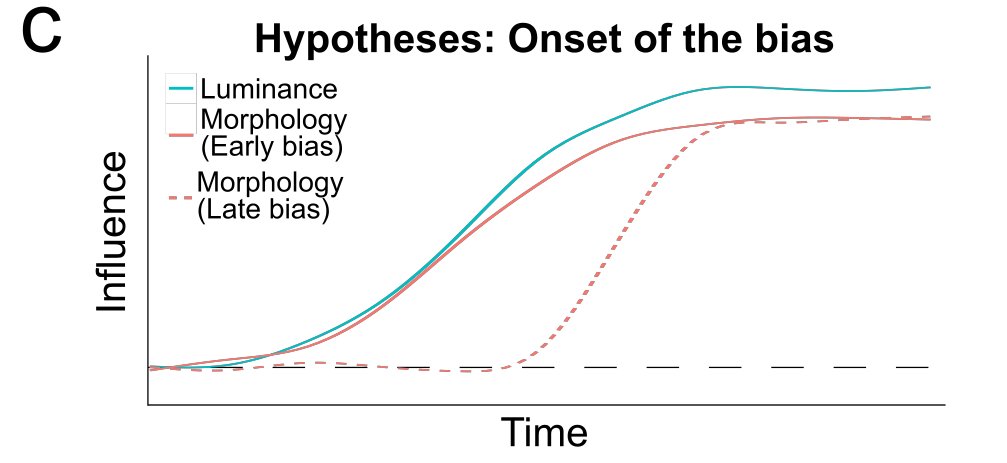
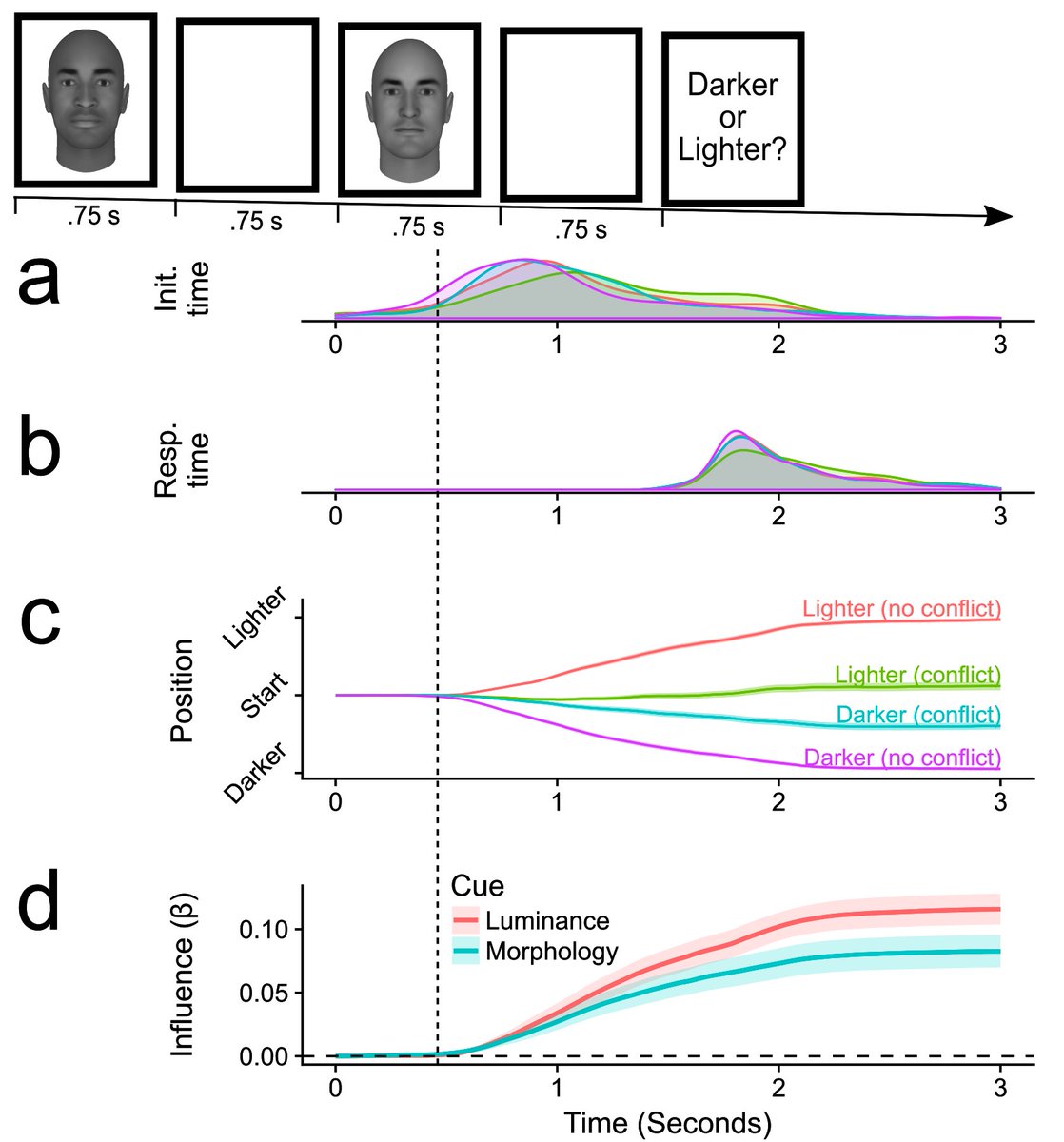

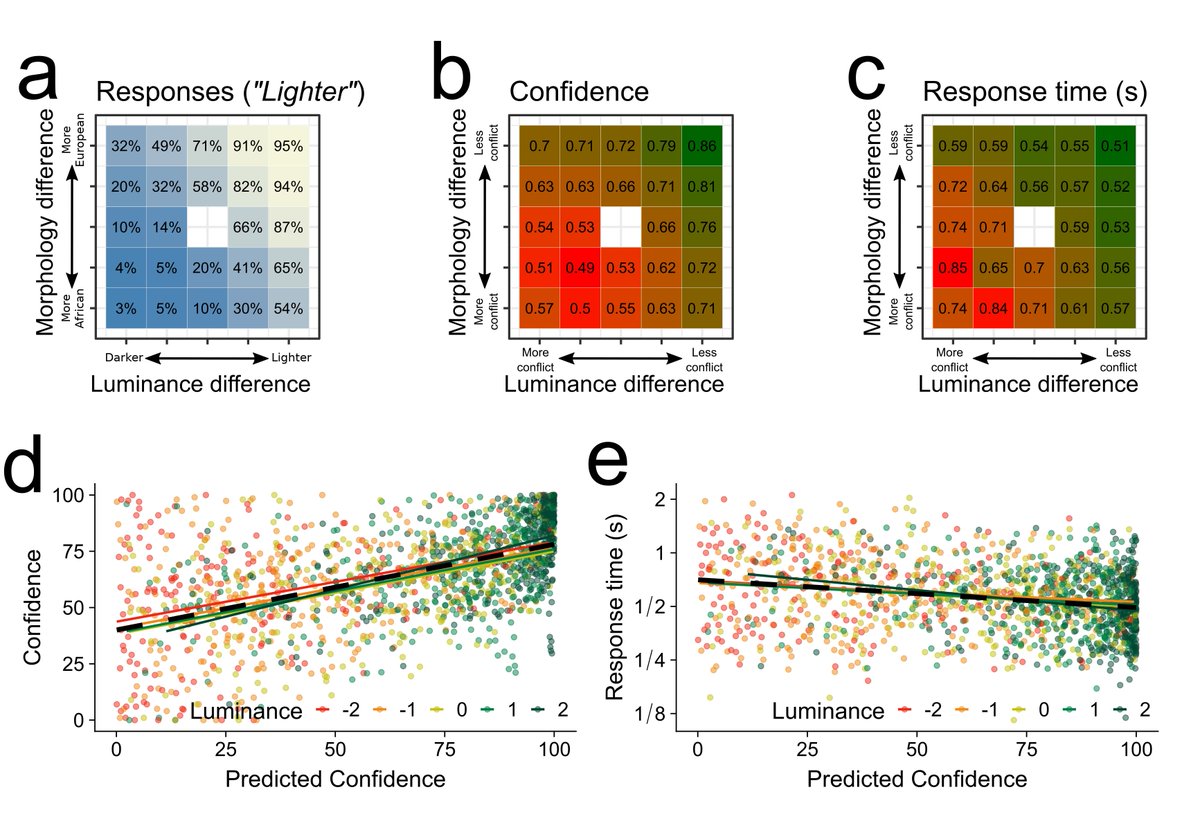
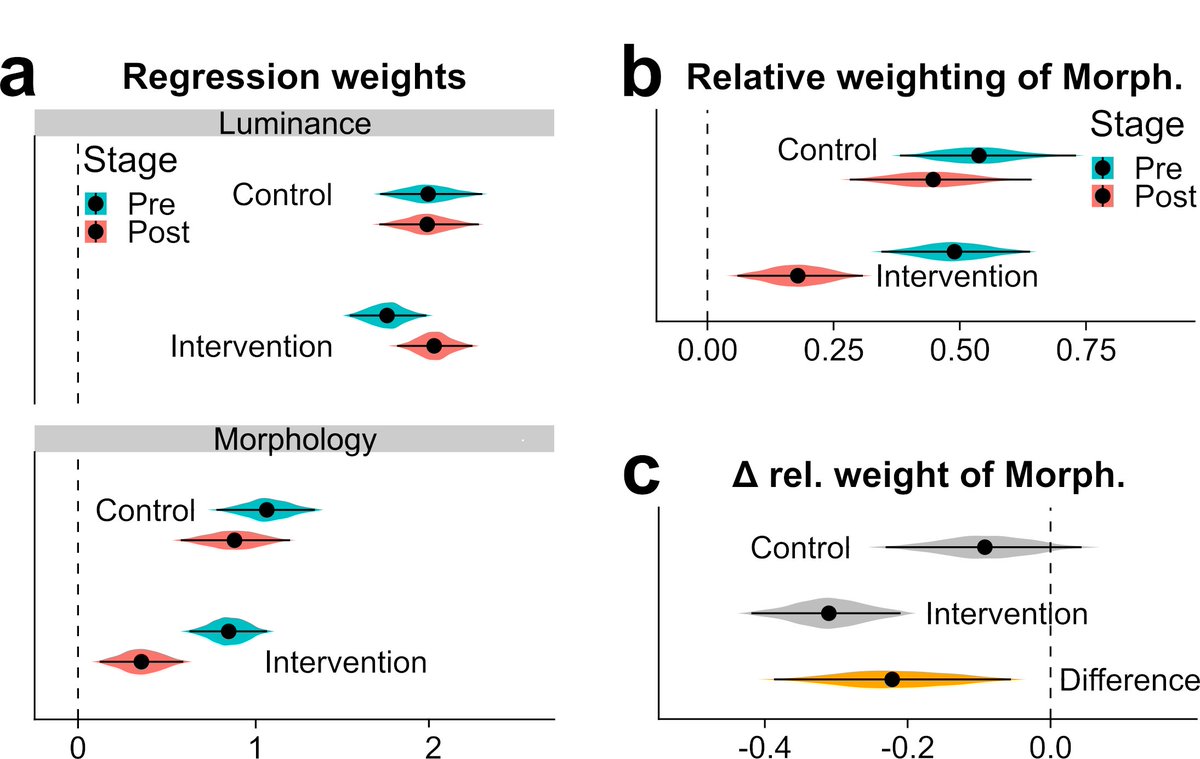
![This affected their early cursor movements too: rather than being initially biased and then changing their minds, participants we just less initially biased.[End of thread (for now)] This affected their early cursor movements too: rather than being initially biased and then changing their minds, participants we just less initially biased.[End of thread (for now)]](https://pbs.twimg.com/media/EbOG1-vXgAEPjVY.jpg)


